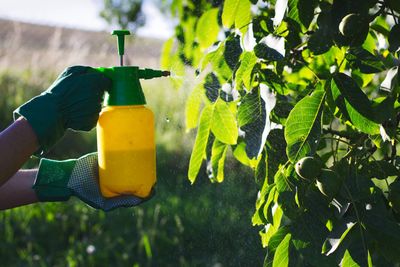What is a Protectant Fungicide?
Protectant fungicides are sometimes also called preventative fungicides. Like the name suggests, these are meant to be applied before a fungus takes hold, as they create a protective barrier that stops infection before it starts. These can be effective before a fungus is present, or when a fungus is present but has not yet entered the plant. Once your plant is already showing symptoms of infection, it’s too late for protectant fungicides to have an effect.
What is an Eradicant Fungicide?
Eradicant fungicides are sometimes called curative fungicides, though there is a slight difference: a curative fungicide is for plants that are showing no visible symptoms of the fungus, while an eradicant fungicide is for plants that are already showing symptoms. In both cases, however, the fungicide is meant for plants that have already been infected, and it attacks and kills the fungus. These fungicides are the most effective in the early stages of infection, especially in the first 72 hours, and are not a guarantee that the plant will be saved or the fungus will be completely wiped out, especially if symptoms are present and advanced.
Protectant vs. Eradicant Fungicide
So, should you choose an eradicant or protectant fungicide? That depends upon several factors, including what time of year it is, what plants you’re growing, whether they are prone to fungus, and whether you think they are infected or not. Protectant fungicides are best for areas and plants that have shown symptoms of fungus in past growing seasons, to be applied before that time in the present growing season. Eradicant or curative fungicides should be used if you suspect a fungus is already present, such as if symptoms have begun to show on neighboring plants. They will have some effect on plants that are already displaying symptoms, but they work much better if you can catch it before that.
